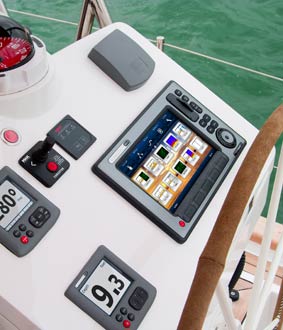Pre-season check
Get ready for the boating season with our hints & tips on getting to know your on board equipment
Know what your equipment is – type, make and model
Know where it is located on your boat and how to get access to it
Know how it is connected and where any junction boxes or connections are located
Understand how it works – consult your instruction manual!
Record serial numbers and keep software calibration records somewhere safe
Return completed warranty cards, and file copies of warranty cards and invoices onboard for reference
Check that your equipment is functioning and interfaced correctly and understand what to expect from the interfacing
Do all your checks in advance – DO NOT leave this to the last minute
Make sure any mechanical mountings are adequately reinforced and bonded into the structure of the boat
Make sure that the equipment is appropriate for the job that you want it to do – if in doubt always go one size bigger.
Getting the Best Results
Regularly check your:
Installation – look for loose mountings, loose connections, exposed wires, corrosion or mechanical damage, look for external sources of potential damage, ie; direct heat or moving machinery.
Calibration – ensure the compass is linearised correctly, the wind instrument adjusted for angle and the depth offset entered, ensure the system is calibrated for the size and type of boat
Wiring and connections – are they loose, corroded, damaged, unsupported or exposed?
Drive unit and fixings – are they secure and the drives lubricated, dry and operating smoothly?
Compass position and adjacent interference – ensure it is away from ferrous objects; motors, wires, steel ballast etc.
and . . .
Clean salt from the control unit keys and other vulnerable areas by washing with fresh water
Maintain good voltage levels – check the voltage at unit as well as batteries, avoid cheap inverters and chargers and supplement power supply with solar power or generators
Avoid power supply problems by using suppressors or ferrites and DO NOT overload batteries – ideally use a separate battery for your electronics and make sure the electronics power supply is stable, avoid supplying bow-thrusters or winches from the same batteries as the electronics if possible.
If Things Go Wrong
Check the basics; loose wires, water damage, batteries and fuses
Note the exact symptoms
Try to pinpoint the faulty unit:
Use faultfinding application notes
Rectify with spares or replacement
Know who to contact:
Raymarine in USA and UK
Raymarine Distributors
Service Agents
24 Hour Support available on the Raymarine website – customer support
www.raymarine.com/recreational/support/index.html
Frequently Asked Questions page
User Manuals









